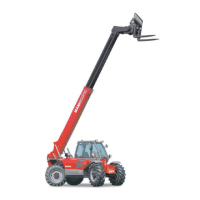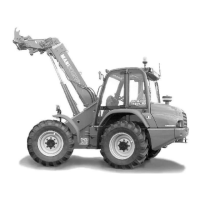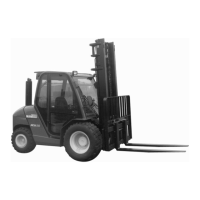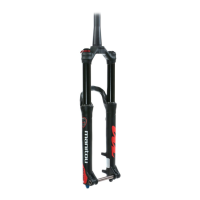1-19
1-19
TAKING UP A HIGH LOATAKING UP A HIGH LOAD ON STABILIZERSD ON STABILIZERS
- Make sure the forks will fit easily under the load.- Make sure the forks will fit easily under the load.
-- Check the position of tCheck the position of the lift truck with respect to the load and he lift truck with respect to the load and make a test run, ifmake a test run, if
necessary, without taking the load.necessary, without taking the load.
- Raise and extend the jib - Raise and extend the jib (1) (2) until the forks are at (1) (2) until the forks are at the level of the load the level of the load (fig. G5).(fig. G5).
-- Block the forks in front Block the forks in front of the load by alternately using the of the load by alternately using the controls to extend and lowercontrols to extend and lower
the jib (1) (fig. G6).the jib (1) (fig. G6).
- Lift the load slightly (1) and tilt the carriage (2) backwards to stabilise the load (fig. G7).- Lift the load slightly (1) and tilt the carriage (2) backwards to stabilise the load (fig. G7).
-- Monitor the longitudinal stability alarm (seeMonitor the longitudinal stability alarm (see: INSTRUCTIONS : INSTRUCTIONS FOR HANDLING A LOAD: CFOR HANDLING A LOAD: C
- LONGITUDINAL STABILITY ALARM). If it is overloaded, set the load down in the place from- LONGITUDINAL STABILITY ALARM). If it is overloaded, set the load down in the place from
where it was taken.where it was taken.
-- If possible lower the load withouIf possible lower the load without moving the lift truck. Raise the jib (t moving the lift truck. Raise the jib (1) to release the load,1) to release the load,
retract (2) and lower the jib (3) to set the load into transport position (fig. G8).retract (2) and lower the jib (3) to set the load into transport position (fig. G8).
LALAYING A HIGH YING A HIGH LOAD ON LOAD ON STABILIZSTABILIZERSERS
-- Raise and extend the jib (1) (2) unRaise and extend the jib (1) (2) until the load is above the elevation (fig. G9), whiletil the load is above the elevation (fig. G9), while
monitoring the longitudinal stability alarm monitoring the longitudinal stability alarm (see: INSTRUCTIONS FOR HANDLING A LOAD: C(see: INSTRUCTIONS FOR HANDLING A LOAD: C
- LONGITUDINAL STABILITY ALARM).- LONGITUDINAL STABILITY ALARM).
-- Position the load horizontally and release it Position the load horizontally and release it by lowering and retracting the jib (1) by lowering and retracting the jib (1) (2) to(2) to
position the load correctly (fig. G10).position the load correctly (fig. G10).
- Release the forks by alternating - Release the forks by alternating retracting and raising the jib retracting and raising the jib (3) (fig. G11).(3) (fig. G11).
- If possible, set the jib in transport position without moving the lift truck.- If possible, set the jib in transport position without moving the lift truck.
11
22
G5G5
11
G6G6
11
22
33
G8G8
11
22
G7G7
11
22
G9G9
33
G11G11
11
22
G10G10

